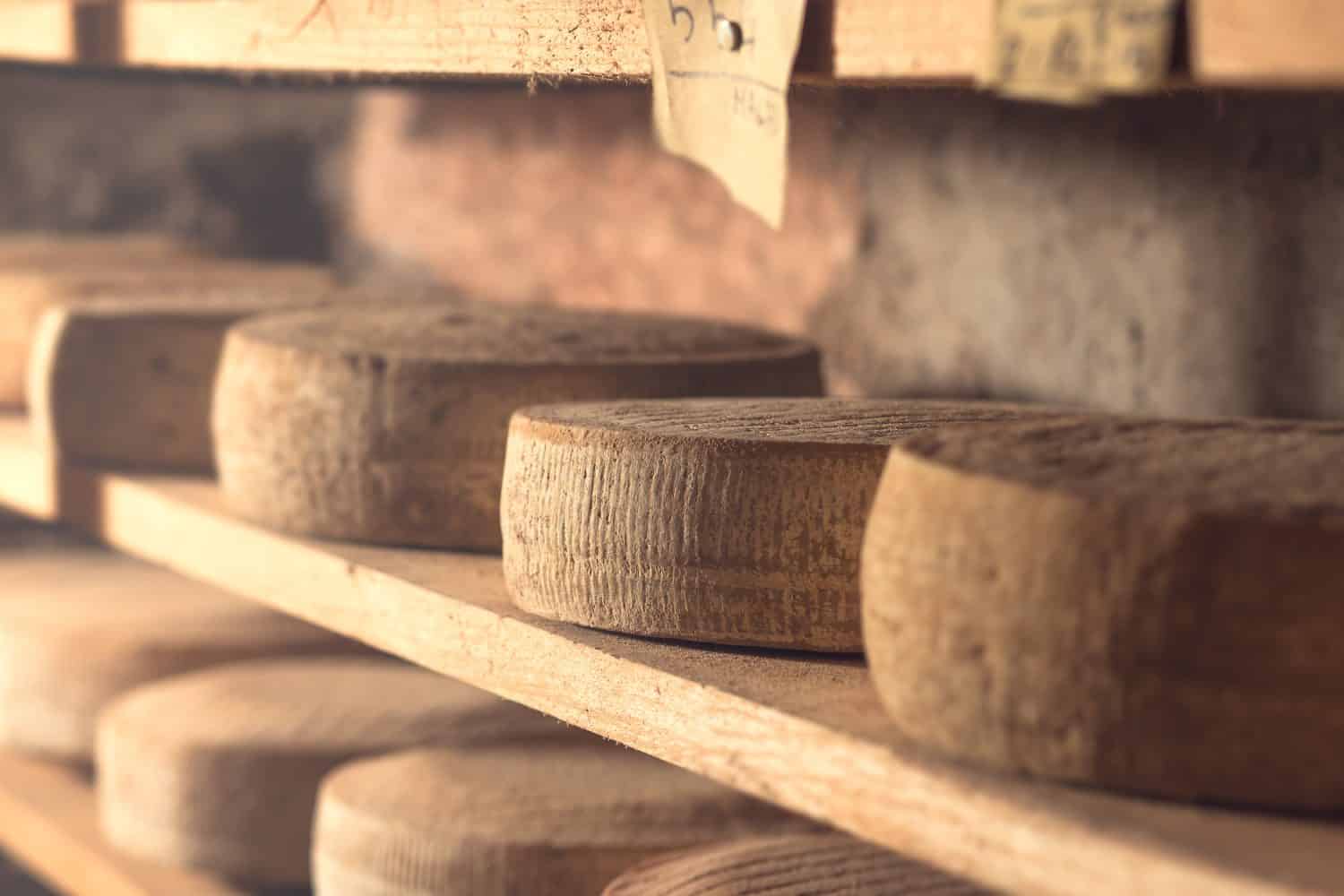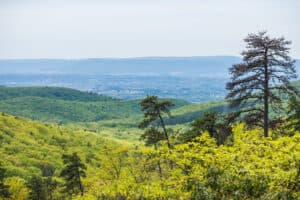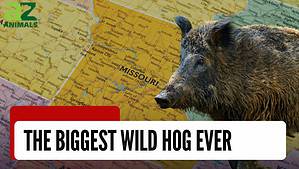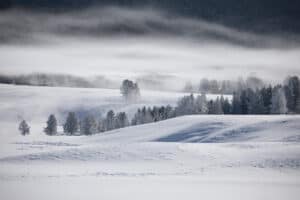Even if you absolutely love cheese, it can be hard to keep track of all the types and flavors you’ve tried or have yet to try. Some of the most amazing and interesting cheeses you have yet to experience are only available in specific parts of the world. If you happen to travel to some of these places, look out for these cheeses that start with N.
There’s more to the world of cheese than what you can find in the cheese section of Walmart, and we’re here to help! We’ve scoured our sources and found some of the best cheeses that start with N. If you made it this far in your alphabet cheese adventure, you’re in for a treat!
15 Cheeses That Start with N
When listing the cheeses that start with a specific letter, it is important to know how we select our cheeses. You can name a cheese based on the region or city it comes from (Norwegian soft cheese, for example), or by the factory or producer of that cheese. Additionally, locals can have different names for cheese based on the spices or ingredients in the cheese. Some cheeses also have local names for more popular cheeses.
With all the combinations of flavors, origins, spices, recipes, and types of cheeses, it’s hard to know what cheese is unique and what is just marketing. According to the International Dairy Federation, there are about 51 different varieties of cheese. Yet, according to Sandine and Elliker, there are over 1,000.
We picked only the cheeses that have their own names and specific production processes. Experts tend to agree and recognize these cheeses as distinct types.
Nguri

The unique taste and texture of Nguri are just as rich as the history of Fujian, China.
©Tatiana Kashko/iStock via Getty Images
Nguri is a semi-soft cheese made from buffalo milk. It comes from the Fujian province of China. Nguri usually comes in small balls, about the size of a baseball or tennis ball, and has a leathery feel. You can lift it and bite into Nguri cheese like an apple. The Chinese prepare Nguri by mixing milk and vinegar which they then marinate in a salt brine mixture. In traditional Chinese, its alternative name literally means ‘salty milk’.
The Chinese usually serve Nguri as a condiment and not as the main part of a meal. It is a very salty cheese, so it is best to balance it with dishes that need a salt pairing.
Niolo
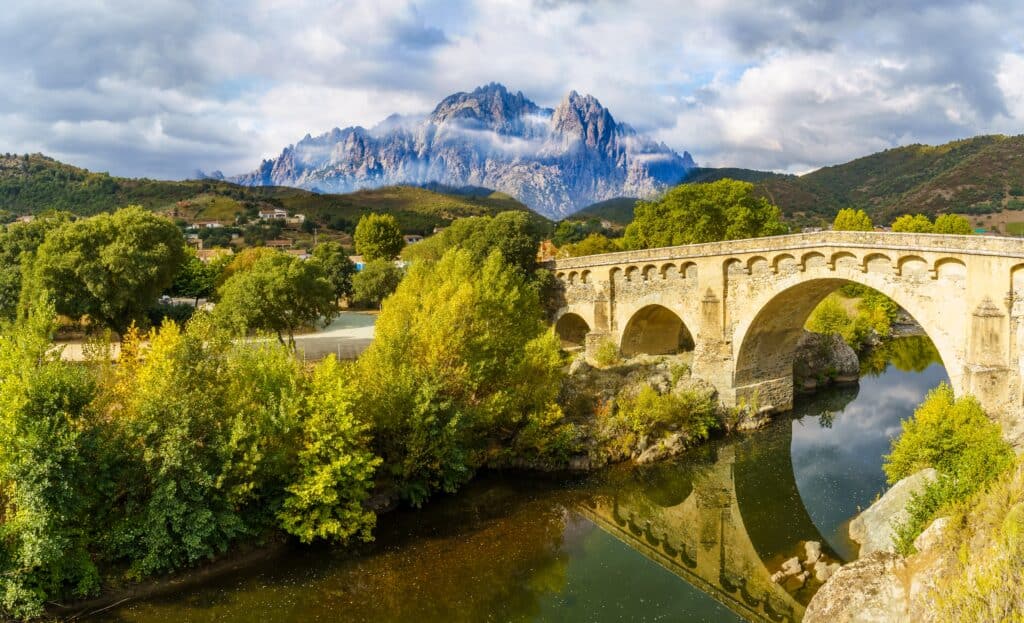
The island of Corsica. Niolo is an iconic taste of this romantic province.
©Balata Dorin/Shutterstock.com
Niolo is a type of Corsican cheese from the Niolo area of the French region of Corsica. It is a relatively soft and sticky cheese that can come from sheep’s or goat’s milk. Corsicans age Niolo cheese for three to four months in humid aging cellars. This humid aging process gives it a strong, distinctive odor. Niolo is a popular and iconic part of Corsican cuisine. The people of this island region use it for both sweet and savory recipes.
Nieheimer
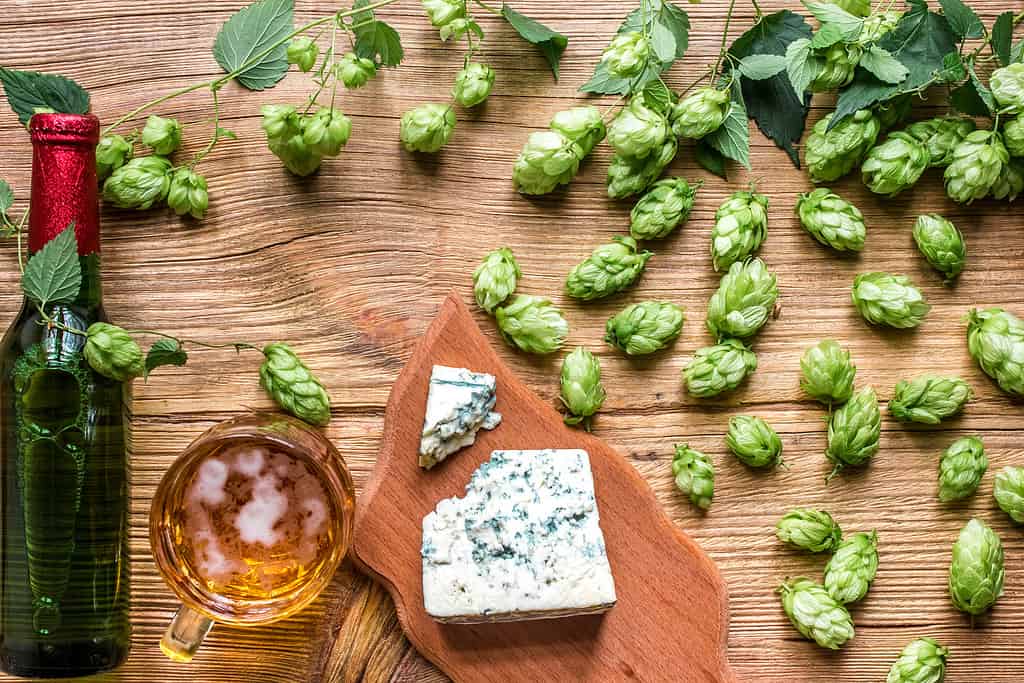
Germans love to pair Nieheimer cheese with beer or bread because of its strong hop flavor.
©Sergey Nazarov/iStock via Getty Images
Nieheimer is a firm cheese made from cow’s milk and named after the town Nieheim in Germany. Cheesemakers in Nieheim make this cheese by aging cheese curds for around eight days. Then, the curds are broken down, mixed with salt and caraway seeds, and dried under straw. Cheesemakers then mix the curds with hops and ripen it even further. It has a strong hop flavor and is usually served grated or shaved on top of other dishes.
Nikšićki kozji sir
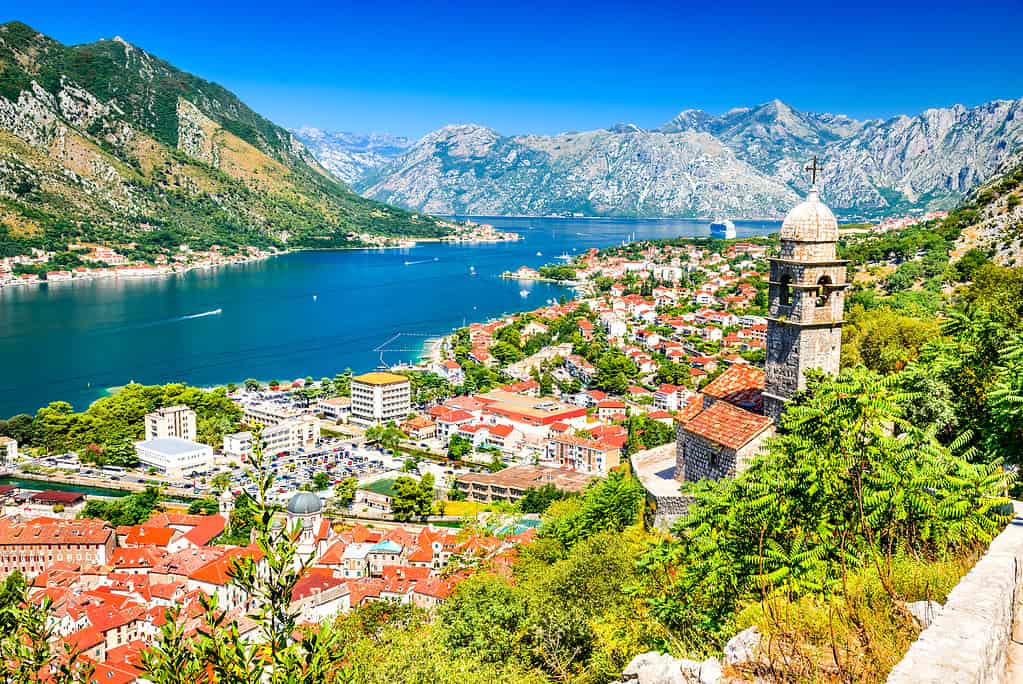
Kotor, Montenegro. Kotor boasts the preserved Venetian fortress, old tiny villages, medieval towns, scenic mountains, and fantastic cheese!
©emicristea/iStock via Getty Images
Good luck pronouncing this unique and tasty cheese from Montenegro! This regional goat cheese is made from whole goat milk in the town of Nikšić (hence the name). It is a creamy cheese with a slightly tangy flavor. You will need to travel far to taste this cheese as it has not spread far outside of Montenegro.
Njeguški sir
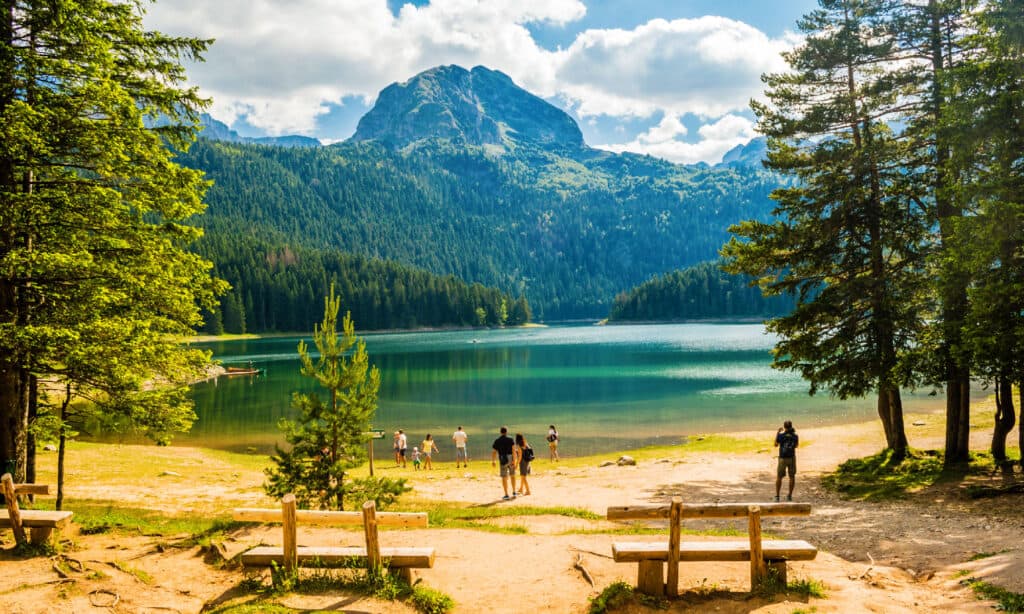
The cheesemakers of Montenegro infuse their cheese with the taste of the high mountains and traditional spices.
©Andrii Lutsyk/Shutterstock.com
Our second of the cheeses that begin with N from Montenegro. Cheesemakers prepare Njeguški sir cheese (or just Njegusi cheese) using full-fat sheep milk and aged for around three months. After the cheese curds have been pressed and placed in a mold, the cheese is then pressed with wood with a stone on top. It has a sour, milky, and salty flavor. Njegusi cheese is famous in Montenegro and is an icon of the rural and pastoral history of the country. Cheese-making has a long tradition in Montenegro, and Njegusi cheese is one of the best examples.
Nøkkelost
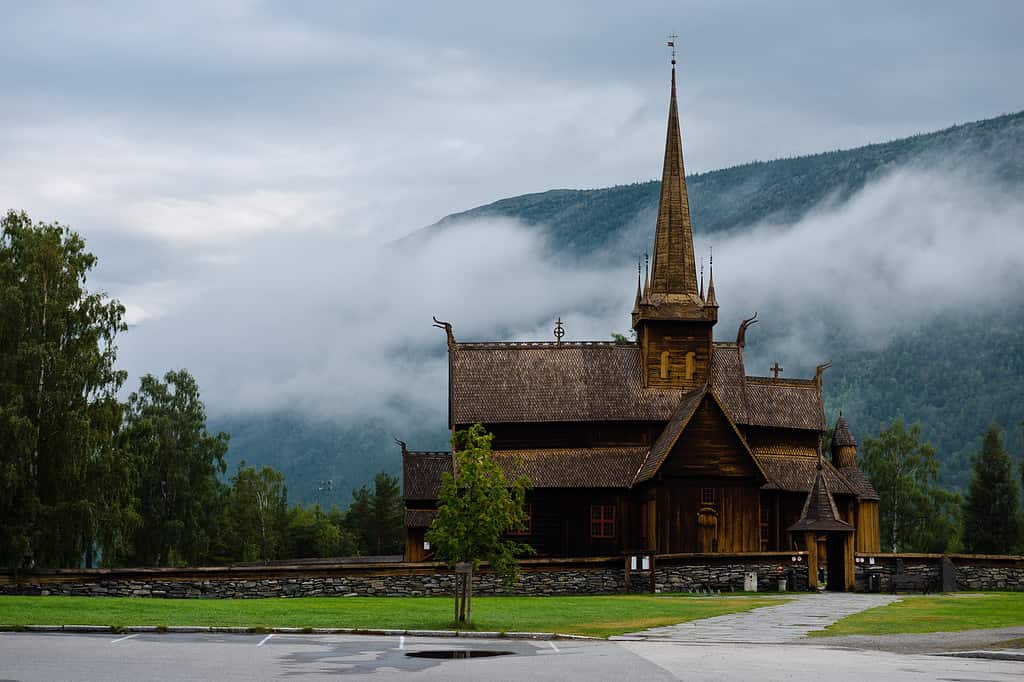
The taste of Norwegian cheese has its roots in medieval Norse cheese-making.
©kurkul/iStock via Getty Images
Norwegian for ‘key cheese’, Nøkkelost is a common name in Norway for the type of cheese known as cumin cheese. Nøkkelost is a semi-hard, yellow cheese made from cow’s milk. Norwegian cheesemakers usually age Nøkkelost in blocks or large wheels for around three months to achieve the best flavor.
Cumin and clove, the common ingredients in Nøkkelost, give this cheese a distinct and unique flavor. Norwegians love to pair this hard cheese with winter ales and dark red wines.
Norvegia
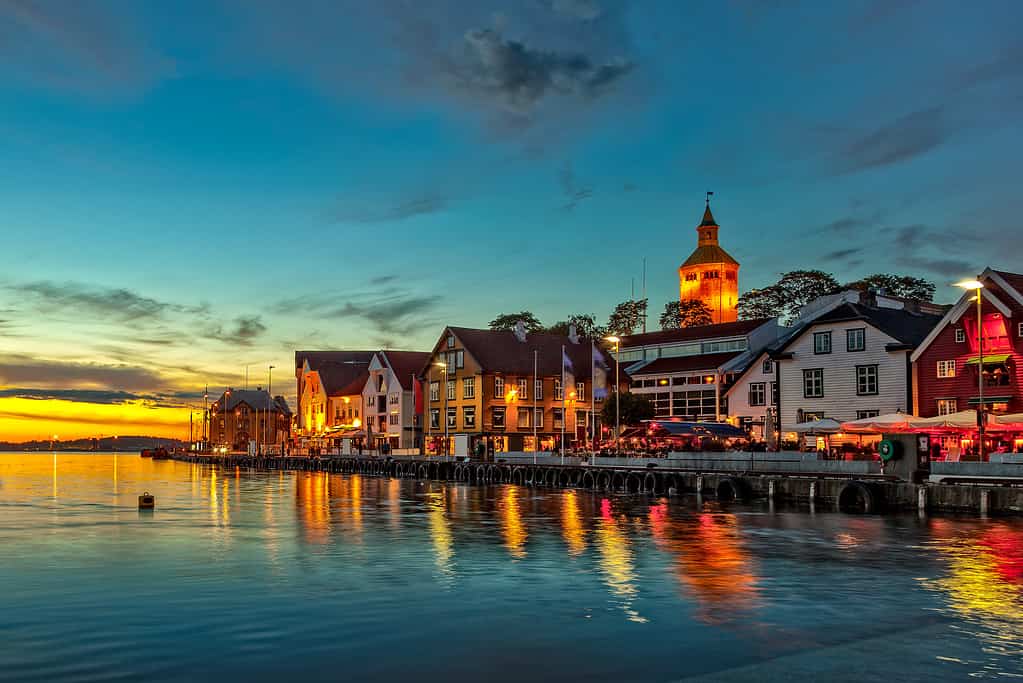
Stavanger, Norway. You can find Novegia cheese in any store in Norway.
©nightman1965/ via Getty Images
Our second Norwegian cheese, Norvegia is Latin for Norway. The cheese company Tine makes Novegia with cow’s milk and it quickly became the best-selling cheese in Norway. Norvegia has a subtle, pleasant taste. People often compare it to Gouda in both consistency and flavor. Tine has produced Norvegia since the 1800s and has protected the recipe for this cheese ever since. Mature Norvegia is ready after three months of aging, but many people prefer to continue to age for at least 8 to 15 months for better flavor.
Nanoški Sir
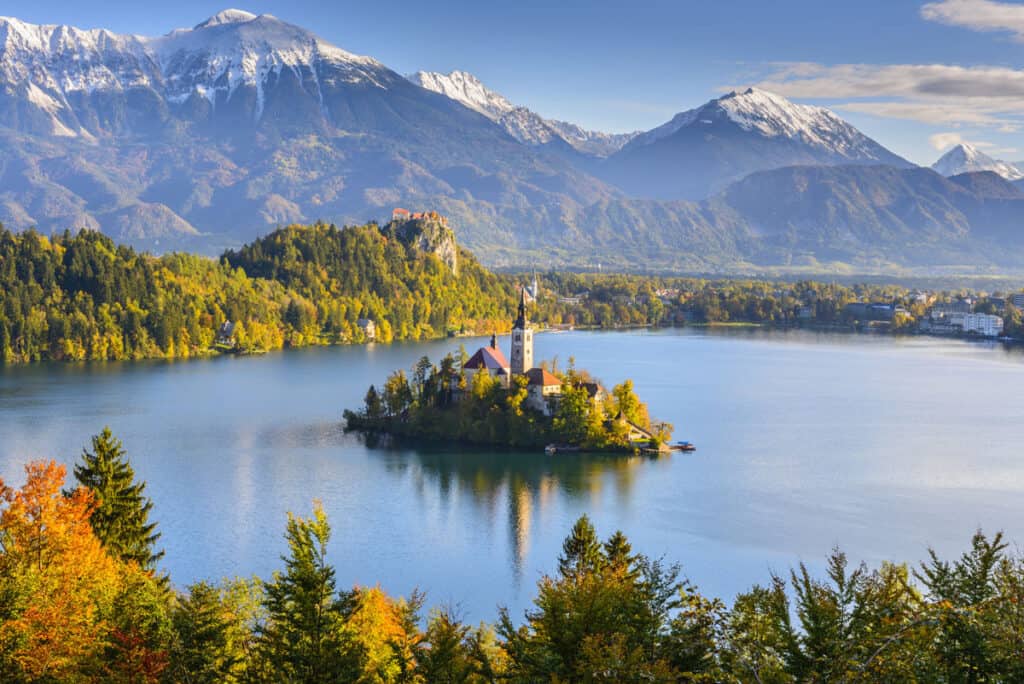
Slovenian cheese has deep roots in ancient traditions. Strong spices help bring flavor to high mountain towns like this one.
©iStock.com/AlbertoLoyo
Slovenians say Nanoški Sir tastes like the wind. That’s quite a tempting name! Nanoški Sir is a hard cheese made exclusively from brown Swiss cows’ milk that is ripened for about three months. When it is mature, it has a spicy taste and a very strong smell. Nanoški Sir has a strong, intense, and savory flavor with notes of pepper and other spices.
Nabulsi
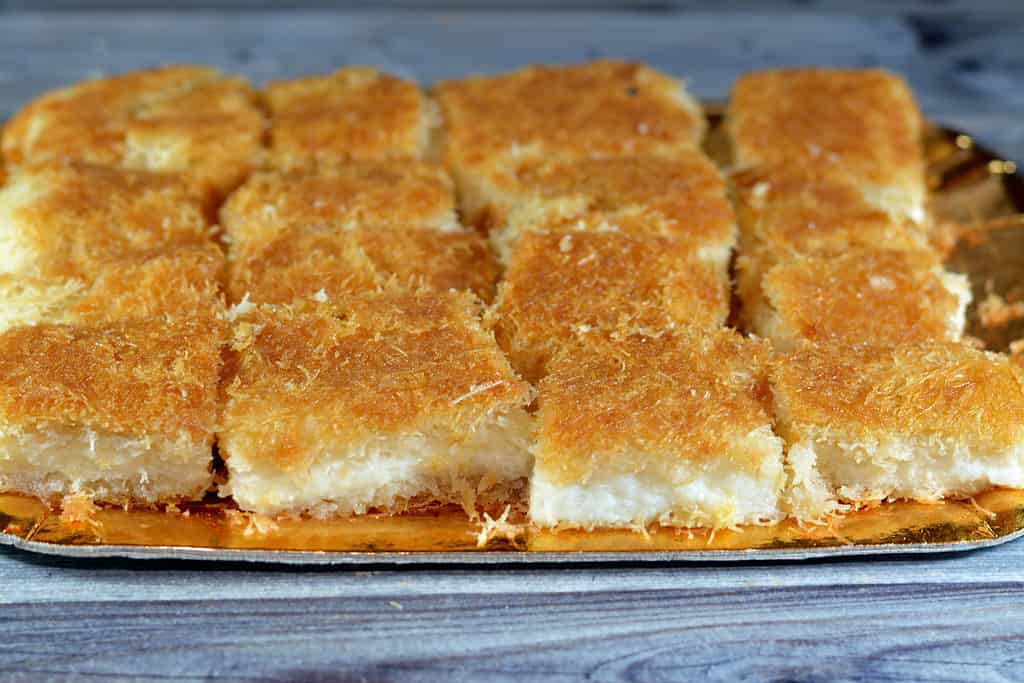
The traditional Middle Eastern dessert Knafeh is often made with Nabulsi cheese.
©Tamer Soliman/iStock via Getty Images
Nabulsi is a traditional cheese of Palestine. Muslim cheesemakers started making Nabulsi in the city of Nablus in the West Bank with sheep’s milk. Today, they often use goat’s milk in some cases. Nabulsi is one of the three primary cheeses produced and consumed in Jordan. This is a semi-hard cheese that becomes soft and elastic when hot, but it does not melt. Technically, Nabulsi cheese is a white, brined cheese. It is flavored with local spices and herbs which give it its distinct Middle-Eastern flavor. Nabulsi is popularly eaten by itself, fried in oil, or used in the regional dessert dish, knafeh.
Neufchâtel
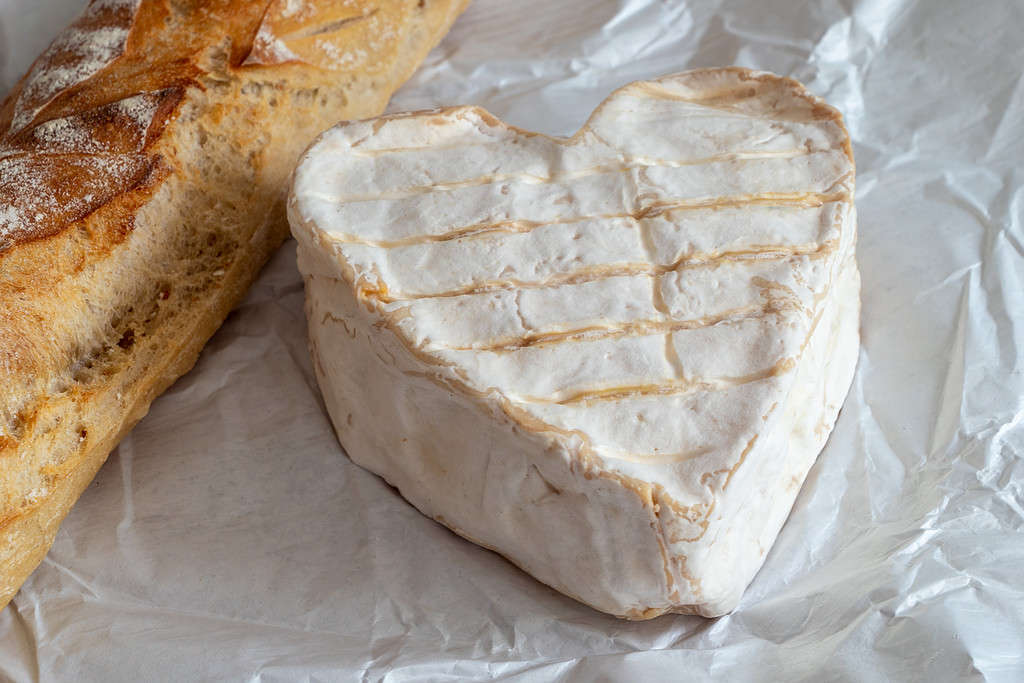
Neufchatel cheese, prepared in the traditional heart shape.
©philipimage/iStock via Getty Images
Neufchâtel is a soft, crumbly cheese produced in Normandy, France. It is one of the oldest types of cheese in all of France, dating back to at least 500 CE, and in a country known for its cheeses, that’s a strong reputation. Neufchâtel is a soft cheese made from cow’s milk and is matured for at least 8 to 10 weeks. French people serve this cheese in heart shapes and gift it in heart-shaped boxes.
During the Hundred Years War, young girls gave heart-shaped boxes with Neufchâtel to soldiers to show their affection and appreciation for their work. The tradition lives on today. While there is an American imitation brand of Neufchâtel, actual certified Neufchâtel cheese has to be produced with milk from at least 65% Normande breed cows.
Nevègal
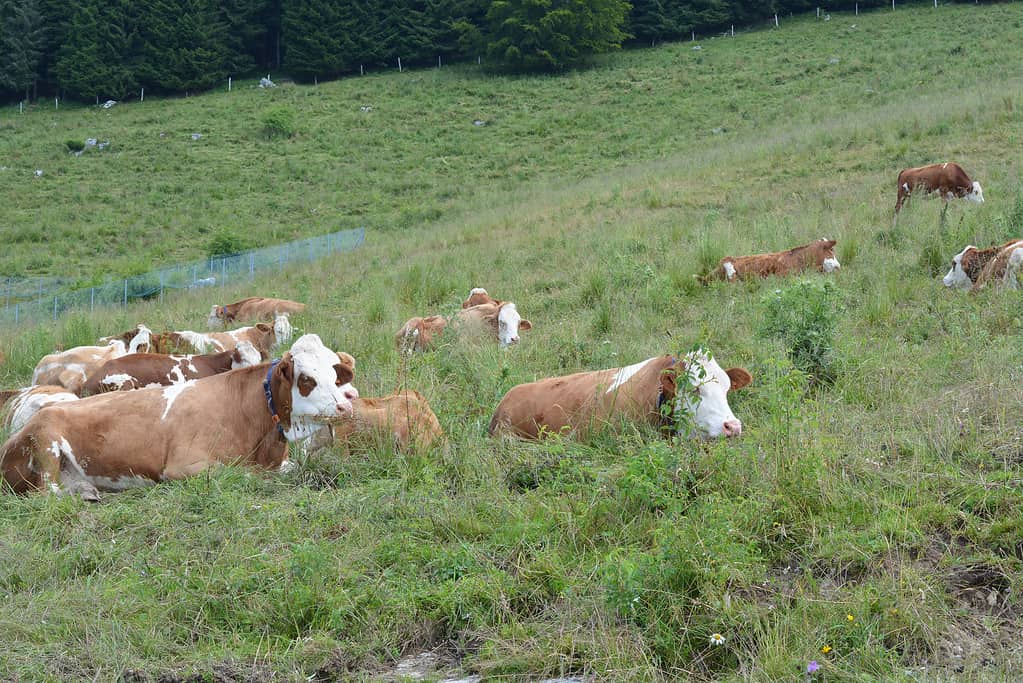
These are the cows in the Nevegal mountains from which the delicious Nevègal cheese is produced.
©corradobarattaphotos/iStock via Getty Images
The first of the Italian cheeses on our list, Nevègal is a hard cheese produced with cow’s milk and aged for around 30 days. It is a sweet cheese with small holes and a pale color. This cheese is named after the Nevegal mountains in Italy.
Nocciolino di Ceva
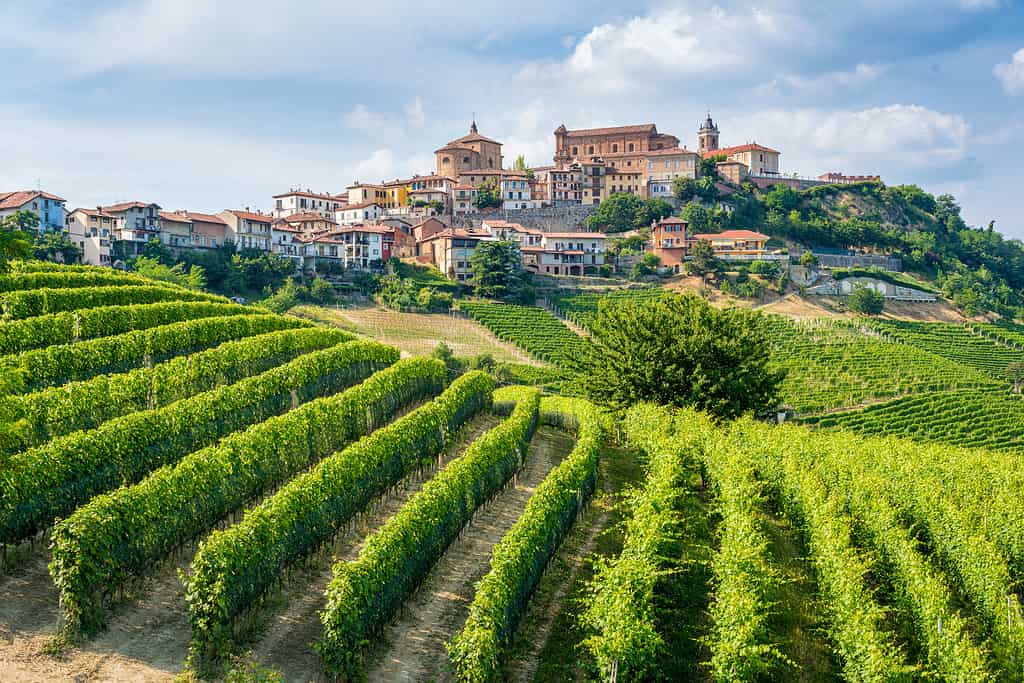
The Nocciolino di Ceva cheese would naturally pair well with the wine produced in La Morra, Piedmont.
©e55evu/iStock via Getty Images
Our second Italian cheese comes from the Piedmont region. Italians make Nocciolino di Ceva cheese by mixing cow’s milk with hazelnuts. This unique pairing gives the cheese a strong nutty flavor that is filling yet light. It is a popular cheese to grate over pasta, or eaten plain with fruit, honey, and berries.
Nostrale d’alpe
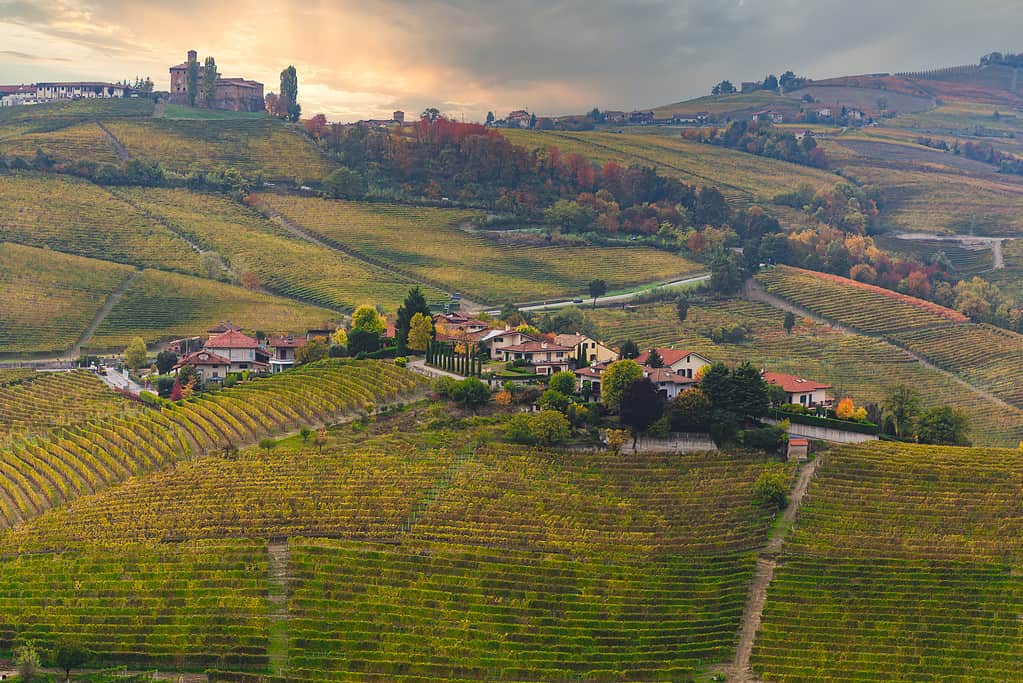
This is the Unesco World Heritage Site of Langhe vineyard hills in Alba, Cuneo province, Italy. This is the region where Nostrale d’alpe cheese is made.
©FedevPhoto/iStock via Getty Images
There are two types of Nostrale d’alpe, one seasoned and one plain, but no batch of Nostrale d’alpe ever tastes the same. It is made from cow’s milk in the Cuneo province of Italy. Nostrale d’alpe is a creamy cheese with a grainy texture and a full, spicy flavor. Cuneo cheesemakers only make Nostrale d’alpe during the months between June and September. This is when the cow herds reach the pastures at the higher altitudes in this part of Italy where they can be milked for cheese production.
Nusnetto Bresciano
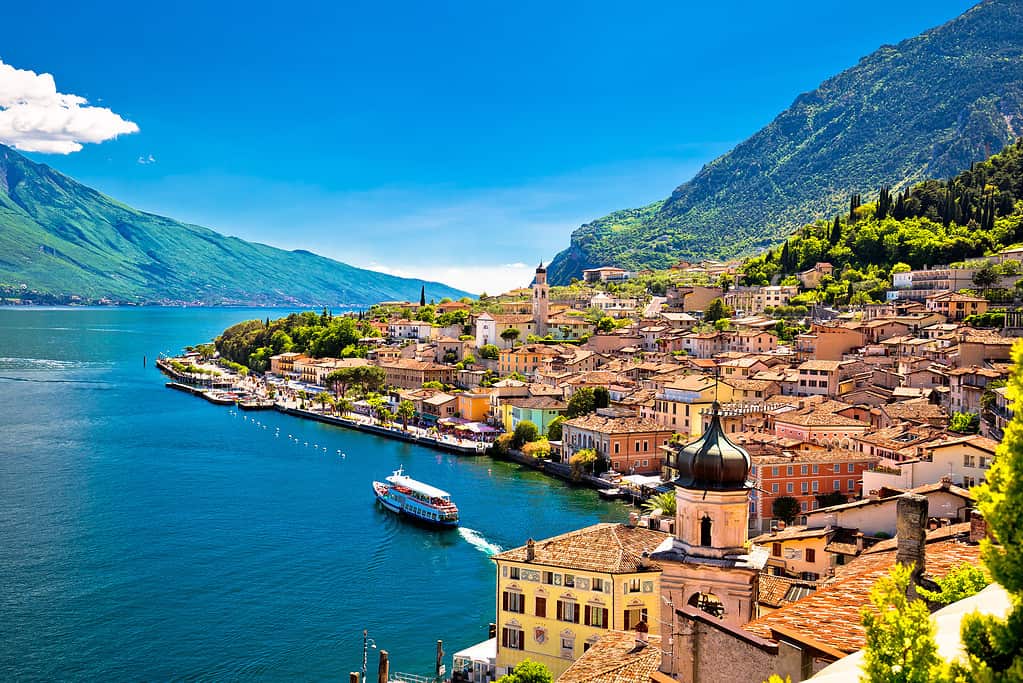
No trip to Italy is complete without tasting one of the many cheeses like Nusnetto Bresciano in Limone sul Garda, Lombardy
©xbrchx/iStock via Getty Images
Nusnetto Bresciano comes from the Province of Brescia in the Lombardy region of Italy. Lombardy cheesemakers create Nusnetto Bresciano with cow, sheep, and goat milk. Many people describe this cheese as having a tangy or sour flavor. Italians often pair Nusnetto with more bitter or savory dishes because of its unique taste.
Nostrano Cheeses
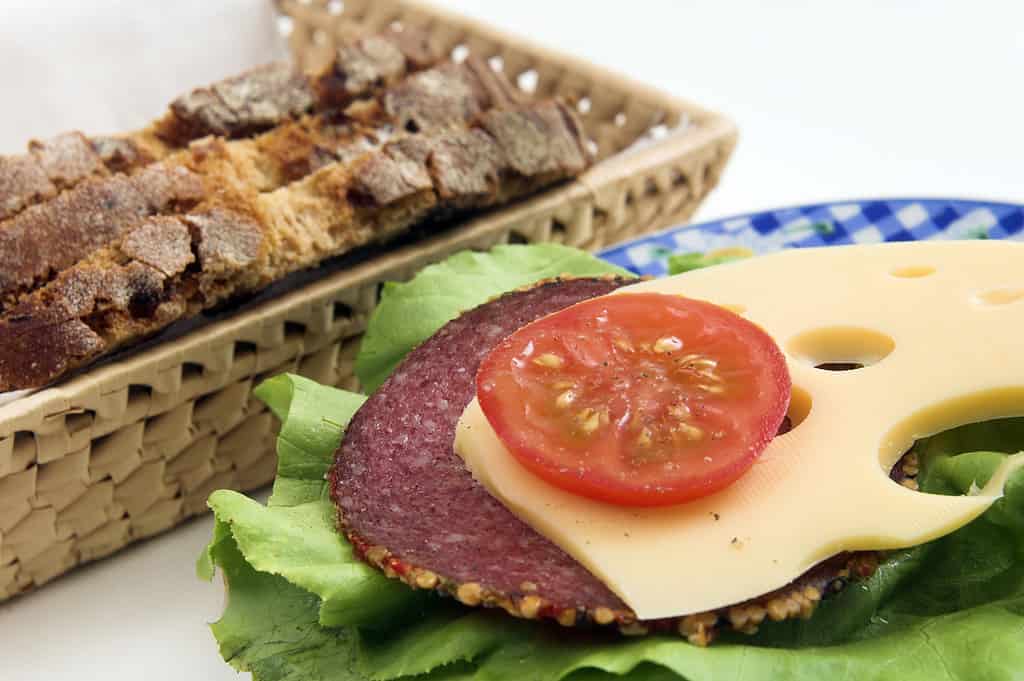
A nostrano cheese can be prepared in a traditional way for lunch or a snack.
©twmedia/iStock via Getty Images
Italy has more varieties of cheese than any other country in the world, so it would make sense that regions and provinces have their own style and flavor of cheese. This is where nostrano cheeses come in. These cheeses are a source of pride for the areas that produce them. Local Italians give special names to the cheese of their region. They preface each one with nostrano and then follow it with their own local name. Nostrano means “our own” in Italy. Each Italian producer makes this cheese with their choice of cow, goat, or sheep milk. Nostrano cheeses include soft, medium, and hard types. Good luck finding any of them outside of Italy. A specialized importer or local connection might be your only way to taste these extremely local flavors.
Some of the more popular nostrano cheeses include Nostrano di malga, Nostrano de casèl, Nostrano di Castalina, Nostrano di Crodo, Nostrano di latteria, Nostrano di malga trentino, Nostrano Fiavé, Nostrano grasso, Nostrano misto capra, Nostrano prealpino, Nostrano semigrasso, Nostrano della Val di Fassa, Nostrano Valchiese, and Nostrano Valtrompia.
Thank you for reading! Have some feedback for us? Contact the AZ Animals editorial team.

